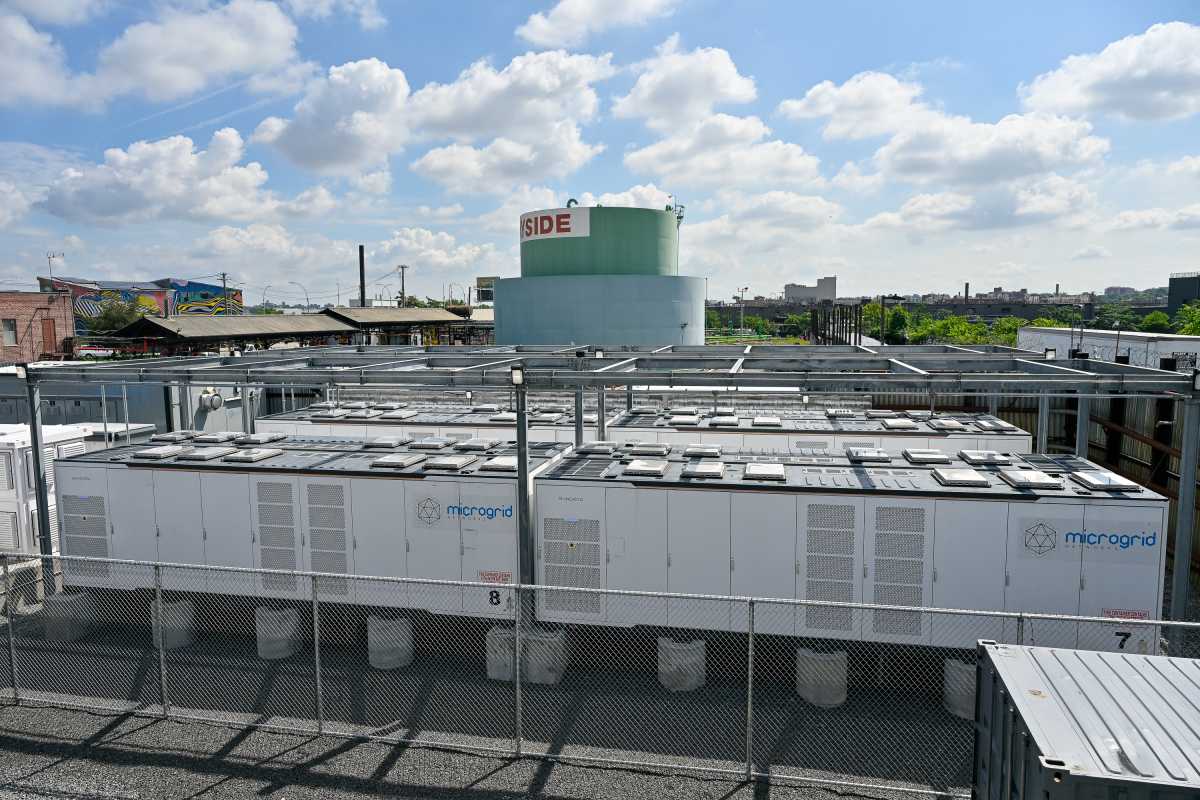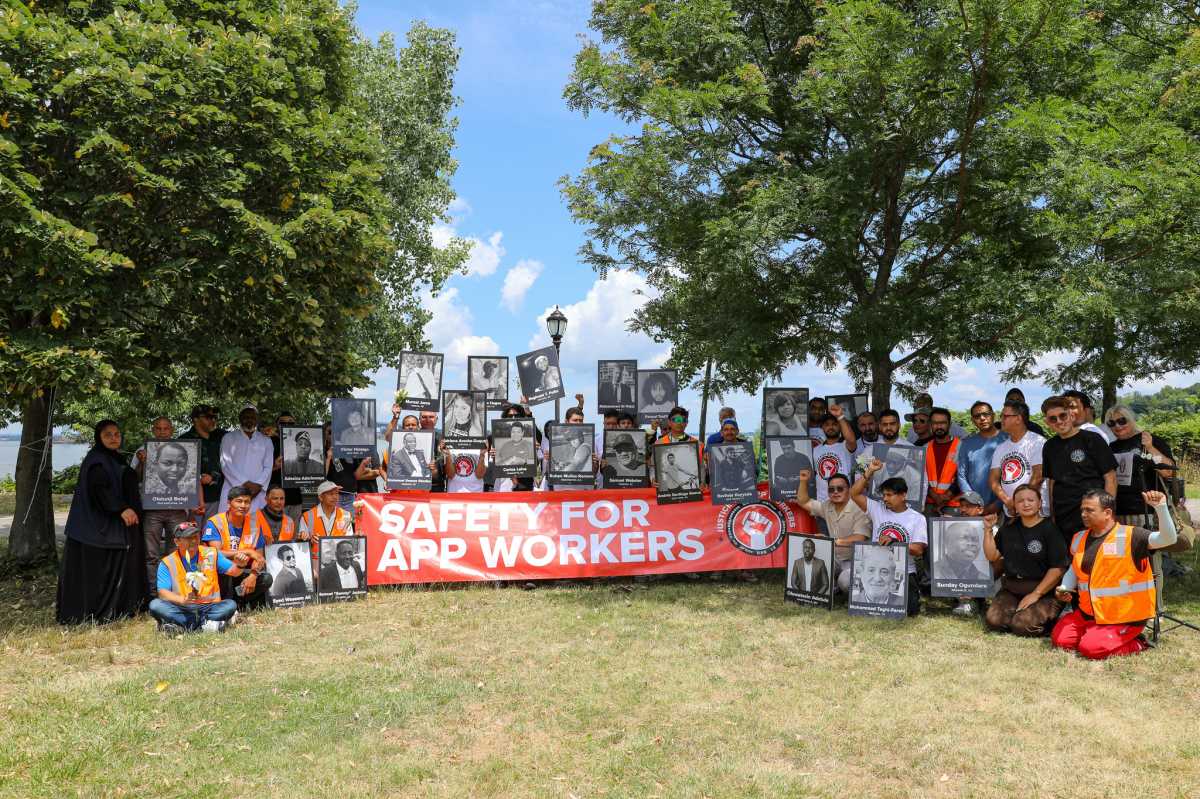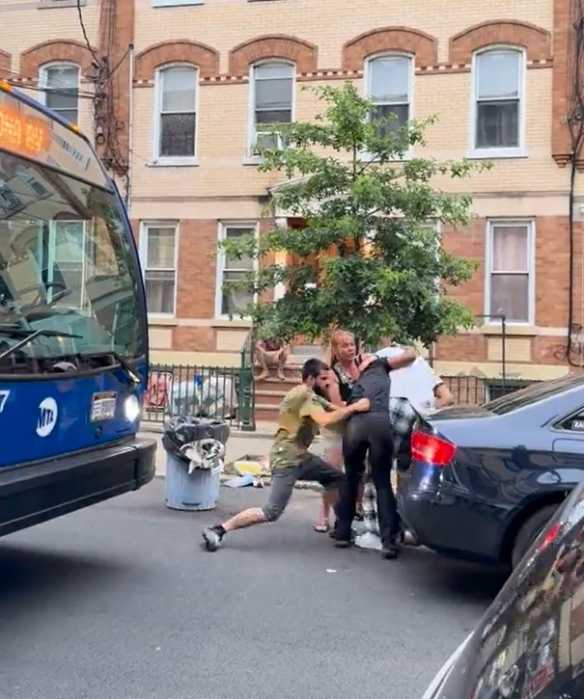BY Albert Amateau
Executives of the North Shore-Long Island Jewish Health System and the developer, William C. Rudin, last week set the record straight about the new comprehensive care center and free-standing, round-the-clock emergency department proposed for the O’Toole building on the west side of Seventh Avenue between 12th and 13th Streets.
The proposal, which will require a Certificate of Need from the New York State Department of Health and approval in April from the U.S. Bankruptcy Court handling the St. Vincent’s Catholic Medical Center bankruptcy, envisions a gut-rehab of the six-story O’Toole building. The interior reconstruction of the 160,000-square-foot building is expected to cost $110 million, including a $10 million contribution by Rudin to help defray the expense.
Two of the five programmable floors in the building would be devoted to the 19,000-square-foot emergency department. The department would be larger that the old St. Vincent’s emergency room, which was closed a year ago, and would be able to serve all but the most severe trauma patients, according to Michael Dowling, chief executive officer of the North Shore-L.I. J. system, which took over operation of Lenox Hill Hospital on the Upper East Side in May 2010.
Because O’Toole, built in 1963 for the National Maritime Union, had a two-story tall hiring hall on the second floor, the third floor of the building is largely structural.
The emergency department would be part of a new community comprehensive care center with imaging equipment including X-ray, CT, MRI and ultra sound plus an ambulatory surgery facility providing intervention for sick, elderly and chronically ill patients.
Dowling, however, said it would be “difficult if not impossible” to open a full-service, acute care hospital and emergency room hoped for by many Villagers to replace St. Vincent’s. It would be unlikely to receive State approval in the current economic climate, he said, especially considering the long-term trend of declining need for acute care hospital beds.
The latest cost estimate for a full-service hospital is $2 million per bed. Moreover, hospitals with fewer that 400 beds are not cost efficient, Dowling said. “That means $800 or $900 million dollars for an acute care full-service hospital and no one has offered to take that on. Isn’t it better to have a medical center that provides for most of the needs of the community rather than nothing at all?” he asked.
The new center, to be operated as a division of Lenox Hill Hospital, would have a total of 400 employees, including 24-hour access to certified adult or pediatric emergency physicians, a staff of 30 specially trained nurses, and a 24-hour observation and decision unit that would allow outpatients to be monitored before they are treated and discharged. If the approvals come as planned, construction could begin this fall and the new facility could open by the late summer of 2013, Dowling said.
North Shore-L.I.J. is working with the F.D.N.Y. and private Emergency Medical Services to establish protocols to prevent bringing in patients with severe trauma wounds – multiple gunshots, open fractures and those requiring immediate surgical or cardiac interventions.
“If you went to New York Downtown [on Beekman and Gold Streets.], which doesn’t have a Level One Trauma Center, the same protocols would apply,” said Dr. Andrew Sama, head of emergency services of North Shore-L.I.J.
Nevertheless, Sama said, “If you were a block away and had a gunshot or a stab wound you could be brought here to be stabilized and then taken to a higher level hospital.” The new department would have about five beds where emergency patients could be observed for up to 23 hours before being released or transported to higher-level care, Sama said.
Having an emergency department with physicians certified for pediatric emergency medicine would be a great advantage to schools like P.S. 41 on West 11th Street at Sixth Avenue and City and Country School on West 13th Street between Seventh and Sixth Avenues, Sama noted.
The O’Toole center would have an ambulance stationed at the ground floor to transport patients who need a higher level of care. North Shore-L.I.J. operates the largest inter-hospital ambulance service in the metropolitan region, Dowling said.
St. Vincent’s emergency room saw about 20,000 treat-and-release patients a year, said Dowling. “We’ll get 30,000 to 35,000 visits a year,” he said, adding that the new emergency department would be able to treat and release 95 percent of patients arriving at the unit. After five years of operation, Dowling projected that the O’Toole center would be treating more than 80,000 patients annually. “We will provide emergency medical care that is efficient, readily accessible and linked to a continuum of care to anyone, regardless of insurance coverage and irrespective of income,” he said,
St. Vincent’s HIV and AIDS service, which operated out of the O’Toole building, closed and its patients began moving out a year ago. St. Vincent’s HIV/AIDS license expires in June. Mt. Sinai and Beth Israel have been working with St. Vincent’s to relocate the remaining patients and services, Dowling said. Representatives from Rudin Management visited doctors at the O’Toole building last week to help them relocate. The O’Toole center would not have an HIV center. Neither would it have childbirth services.
Dowling said he intended to hire the best possible staff for the O’Toole center. “We work very closely with 1199 [the Service Employees International Union local that represents hospital workers] and we’ve already hired 300 people, many from St. Vincent’s,” he said.
“This will not be an urgent care center or a walk-in clinic. It is a full-service, free-standing emergency department with procedure rooms for ambulatory surgery – able to handle anything that can be done in one day,” said Dowling. While the O’Toole center would be the first free-standing emergency department in the metropolitan area, there are more than 200 such departments across the country. “We think we will serve as a model for many others in the region,” he said.
Rudin said he was excited to be involved in the partnership with North Shore-L.I.J. The adaptive re-use of the O’Toole building would be an added preservation benefit of the project, he said. Rudin would also convert part of the triangle across West 12th Street from O’Toole into a public park. He promised to involve neighborhood groups in the design of the triangle park. However, the part of the triangle now occupied by a storage facility for oxygen tanks would remain as it is and would not be converted to public space.
Rudin also said the project, which would provide employment for about 1,000 workers during construction in addition to the permanent staff of 400, should be welcomed by merchants in the St. Vincent’s area who have had a tough time surviving since the hospital closed.



































